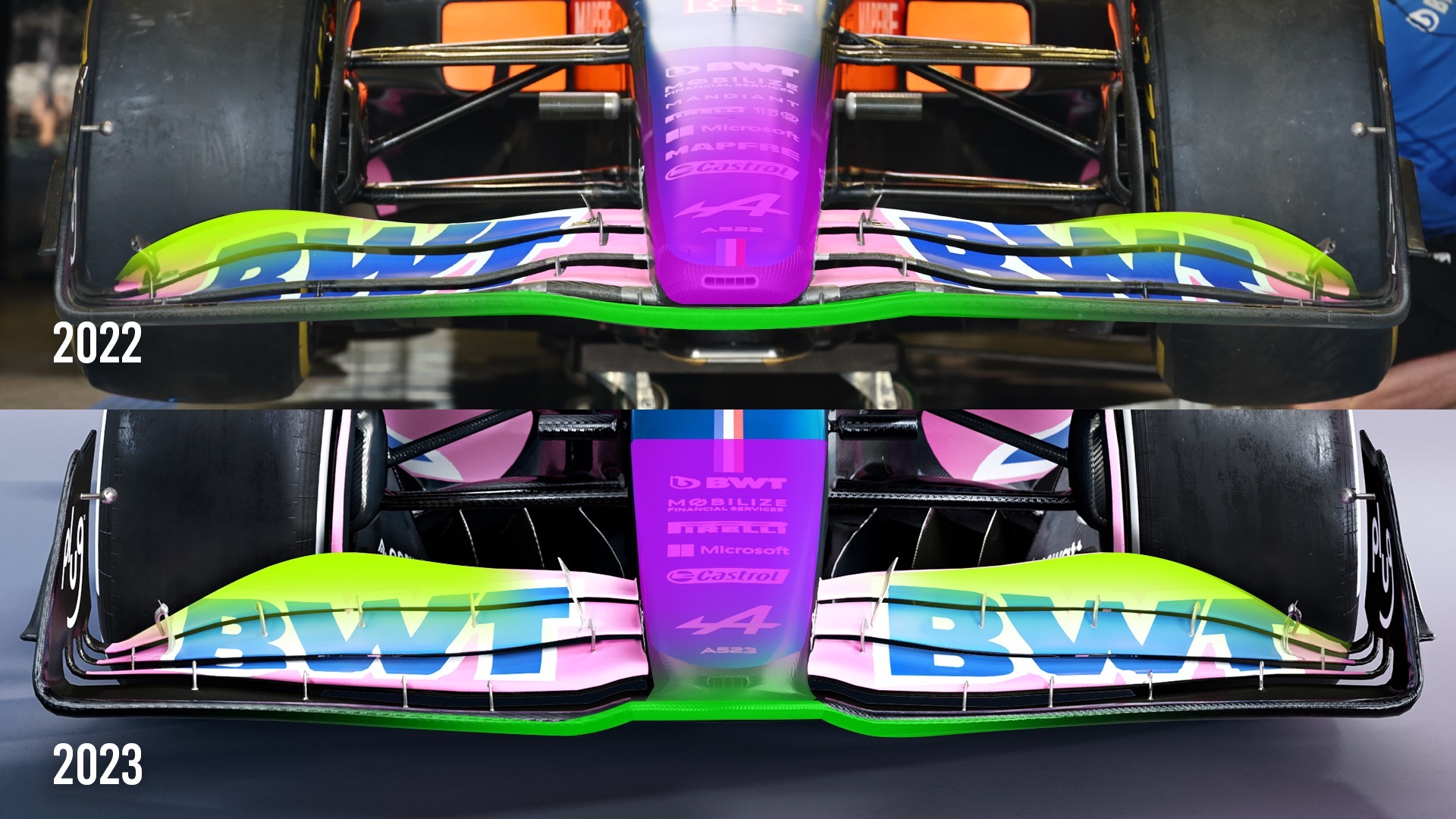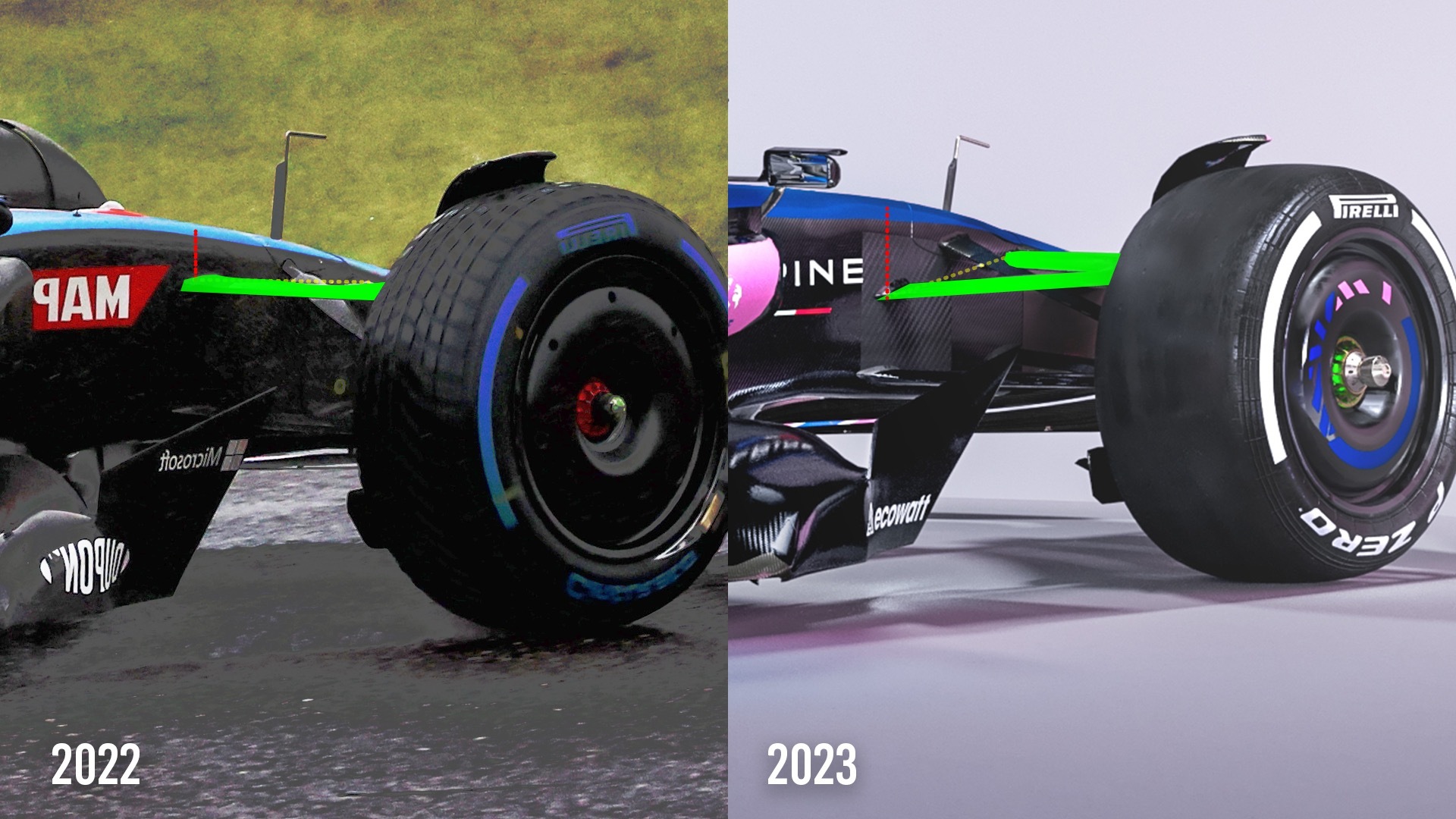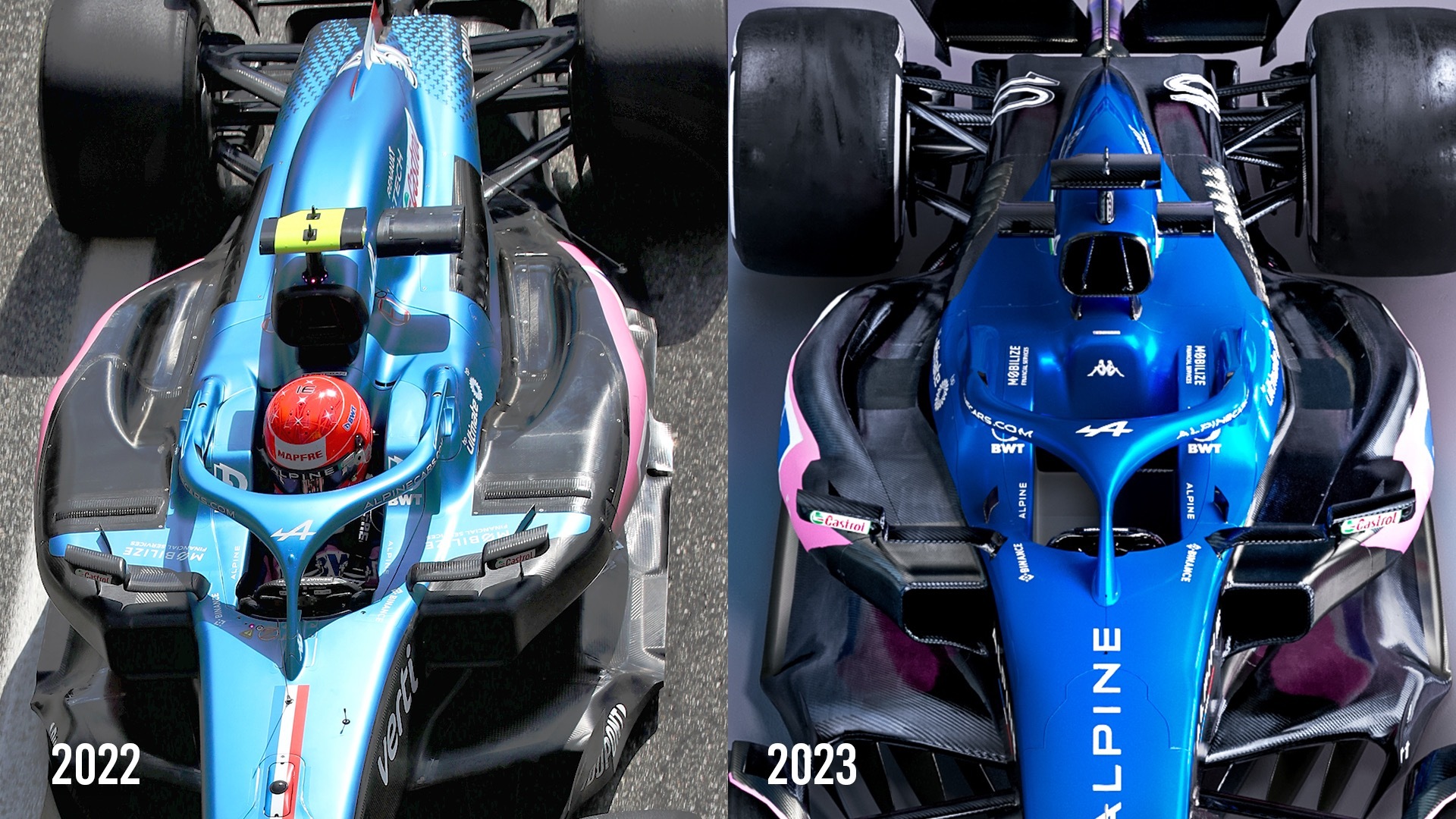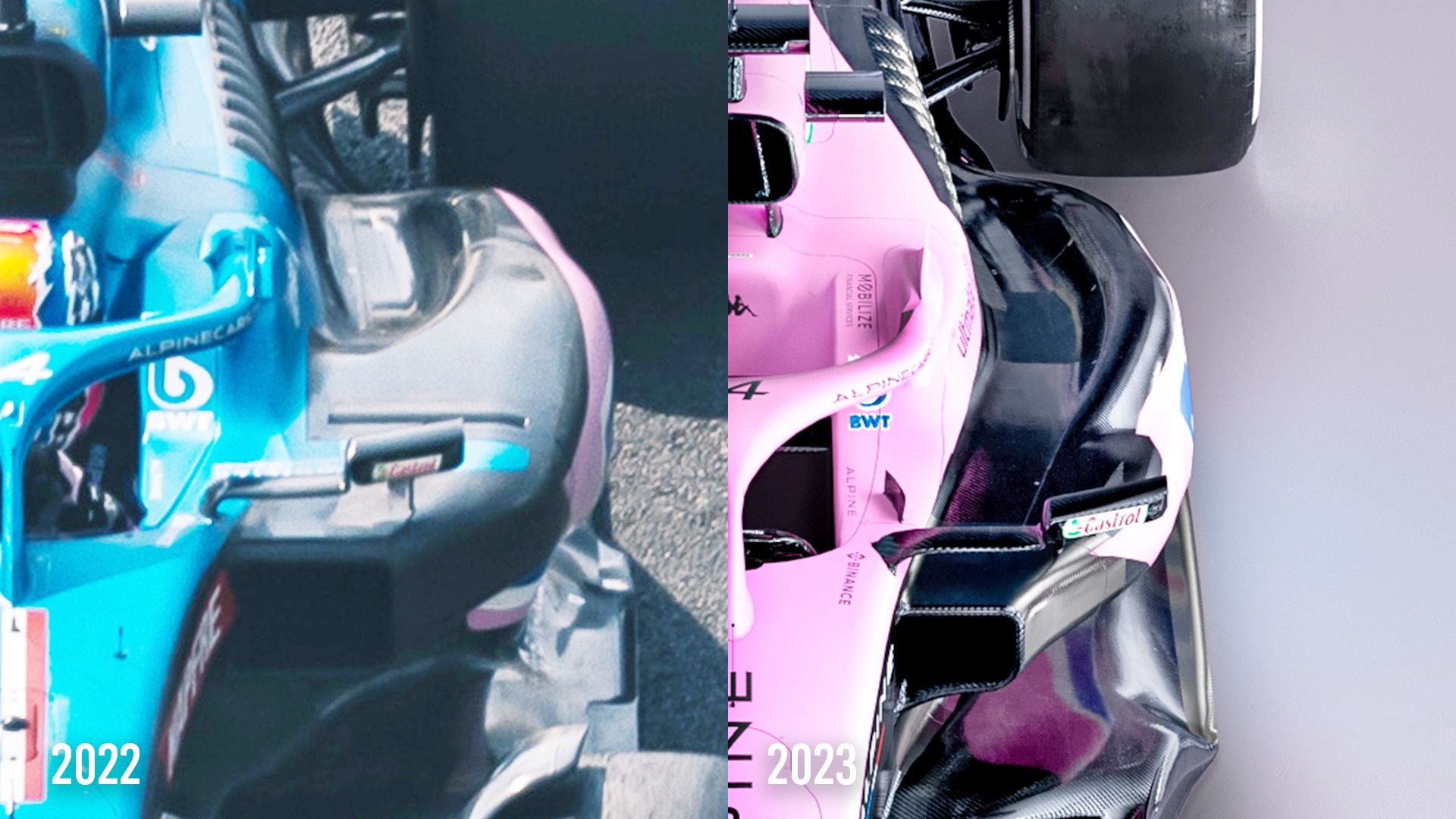Up Next

The highlight of Alpine’s 2023 Formula 1 car launch was the appearance of technical director Matt Harman.
Even though the cars he was walking around on stage were a show car and a largely 2022-based model (the renders Alpine released online being the more representative indication of the 2023 design), his talk through the key areas of change on the A523 gave us plenty to go on, along with our own observations from the shots released of the car shaking down at Silverstone on Monday.
The car does feature some striking changes. The nose has changed structurally, which Harman said was to offer more freedom to change elements of the front wing – both in terms of speed and how the airflow is fed to the suspension behind.

“We’ve looked quite extensively at changing the nose concept,” said Harman.
“There’s a very different structure in here which gives us more freedom to change more elements of the front wing, particularly more quickly, and allow us to control that airflow more consistently into the front suspension area.”
Alpine’s made the nose into a flatter design, which potentially has also allowed weight to be taken out of it.
The front suspension is the same as 2022 in concept with a pushrod geometry, but with changes to the kinematics – so that means effectively the way these interlinked parts move and interact has changed. As part of that, the wishbones have been repositioned.

As Harman said, this is all about ensuring there is control of the airflow in terms of how much goes over the top of the floor and how much into the underfloor.
The way the airflow coming off the front wing, suspension and the rotating front wheel is managed and distributed is crucial to optimising the powerful ground effect underfloor.
Alpine had great success in 2022 with its various floor developments, introducing two major spec changes during the season but also making regular detail tweaks throughout the year.
Harman indicated there will be plenty of changes here with the aim for what he called a very aggressive development pace.

Perhaps the most striking aspect of the car is the deep gully that feeds airflow running the length of the sidepod that feeds airflow to the rear of the car. That’s a significant change from last year’s design.
The rear suspension has also been changed significantly, switching from a pullrod to a pushrod design. Harman described this as more simple but also significantly lighter.
But the inboard suspension components – the bits you can’t see – have also been made more complex to give the team a wider range of set-up tools to optimise the car. And all of this with a geometry that improves the control of the airflow through the suspension to the rear of the car.

Finally, Harman said an aggressive weight reduction programme has been conducted. That has not only got the car down to the weight limit, but beyond it to allow the use of ballast to optimise weight distribution.
Last year Alpine was caught out on the weight front by the last-minute rule change that allowed the use of floor stays to combat porpoising. It had foreseen that problem arising and taken precautions against it that added weight, but the stay dispensation then put it at a disadvantage to rivals that hadn’t seen porpoising coming and strengthened their floors in response.
Harman is also confident that, despite the engine freeze, the Renault power unit will be more reliable this season. Changes have been made for reliability reasons and it’s performed well on the full-car dyno.
“We’ve very recently run the car on a full powertrain dyno configuration and done an extensive amount of mileage, which is basically where we run the whole car on a dyno and check it,” he said.
“And that was very, very good. There’s a lot of confidence and that great piece of work that we’ve done together collaboratively has shown some great benefits.”
Connected to that are tweaks to the cooling packaging to open up more space for aerodynamic gains. That includes not only changing the packaging of the cooling system, but making it smaller. This is one of the reasons why the whole sidepod and engine cover package is visibly more compact.

Harman also said that the plenum temperature for the engine has been reduced, which means a little more power as well as a reducing in cooling demands.
The Race’s technical expert, Gary Anderson, has given his seal of approval to the car and thinks Alpine now looks on track to close the gap to the top three.
“It’s a neat package,” said Anderson, whose full verdict on the A523 will be published on Friday.
“They’ve stuck by their own design convictions.
“Yes, the car is the same as some others in quite a few areas but that’s because the regulations are so prescriptive.
“Harman spoke well and with belief in the direction they have taken and it all made sense to me.”





